We all love indulging in delicious treats, but sometimes our taste buds clash with our desire to eat healthy. Today, we are sharing over 25 awesome, sneaky ways to modify your favorite recipes without compromising on flavor. Say hello to healthier versions of your beloved dishes that will leave you feeling guilt-free and satisfied!
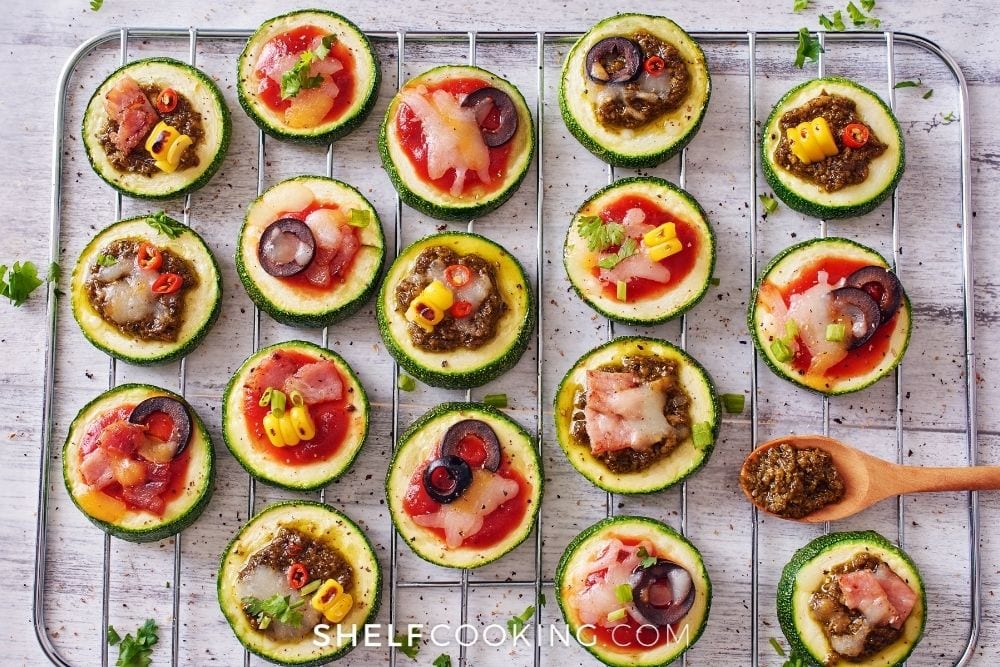
If you've ever wondered how to enjoy your favorite comfort foods, family classics, or guilty pleasures without compromising on nutrition, stay tuned! We're about to uncover the secrets of reducing fat, sodium, and simple carbs while amplifying the flavors to tantalize your taste buds and nourish your body.
Remember, healthy eating doesn't mean sacrificing taste; it's about making smart choices and finding the perfect balance between nourishment and enjoyment. We LOVE our substitutions, here at Shelf Cooking! First we'll cover some general cooking tips for “healthifying” a recipe. Then we'll get specific on ways to cut out excessive sodium, fat, and sugar or increase the nutritional value of a dish!
BASIC HEALTHY RECIPE MODIFICATIONS
1. The Veggie Power-Up – One of the easiest and tastiest ways to make a recipe healthier is by increasing the volume of veggies! Sneak in some grated carrots or zucchini into your muffins and cakes. Not only will they provide a delightful natural sweetness, but they also add a dose of nutrients to your treats.
2. The Secret Swap: Whole Grains – When it comes to carbohydrates, opting for whole grains is a winner! Replace refined flour with whole wheat flour in pancakes, waffles, and bread. Not only will you get that nutty flavor, but you'll also benefit from the fiber and extra nutrients. It's a win-win!
3. Sneaky Sweeteners – Reducing sugar doesn't have to mean sacrificing sweetness. Opt for natural sweeteners like honey, maple syrup, or mashed bananas in your recipes. They add a lovely flavor while keeping things healthier than refined sugars.
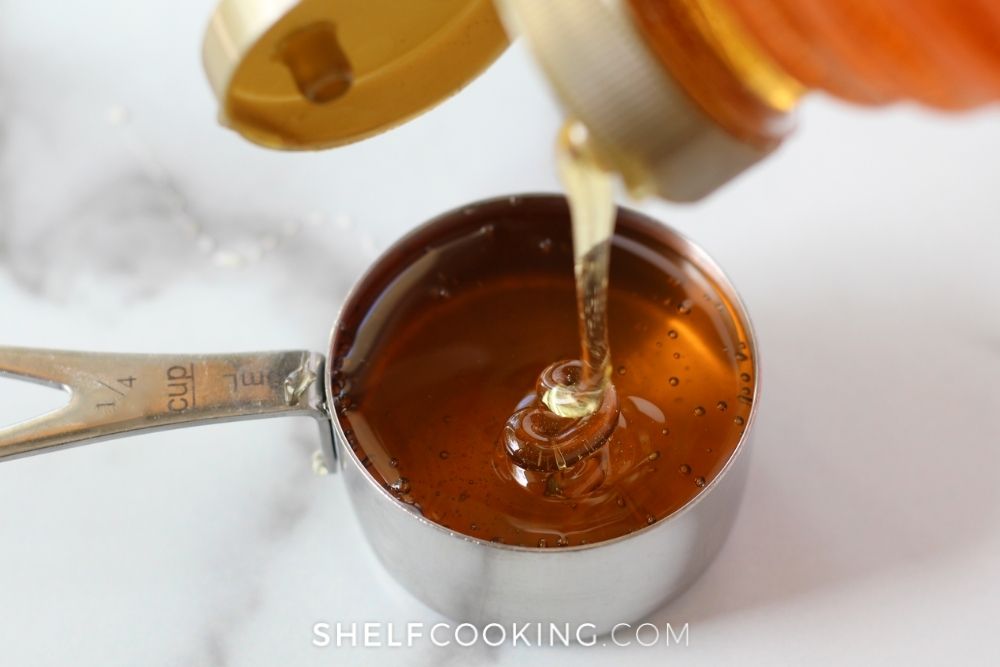
4. Clever Cooking Techniques – How you cook your food can make a big difference too! Choose baking, steaming, or grilling over deep-frying whenever possible. These methods not only save on excess calories but also retain more of the nutrients in your dishes.
5. Flavor Bombs: Herbs and Spices – Enhance your dishes with herbs and spices instead of relying on excessive salt or unhealthy condiments. Fresh basil, cilantro, oregano, or a pinch of turmeric can elevate your meal's taste without compromising your health. And hey – if you want to start your own counter herb garden, check out this post!
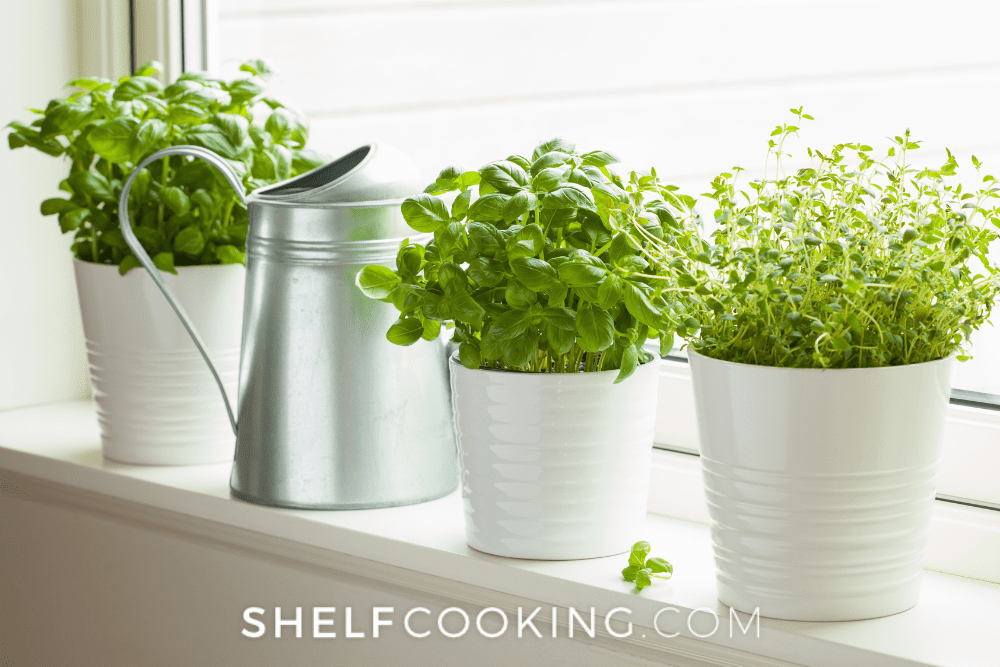
WAYS TO DECREASE SODIUM CONTENT OF A RECIPE
We all know salt is a flavor saver! Salt is a universal seasoning of choice, and we love to add a pinch or dash…okay sometimes a handful…..to most recipes. That being said, sodium is commonly overconsumed and excessive sodium can have some unpleasant effects! Too salty of a diet can cause high blood pressure, kidney damage, increased risk of heart disease, and bloating.
Here are recipe modifications to decrease excess salt and sodium!
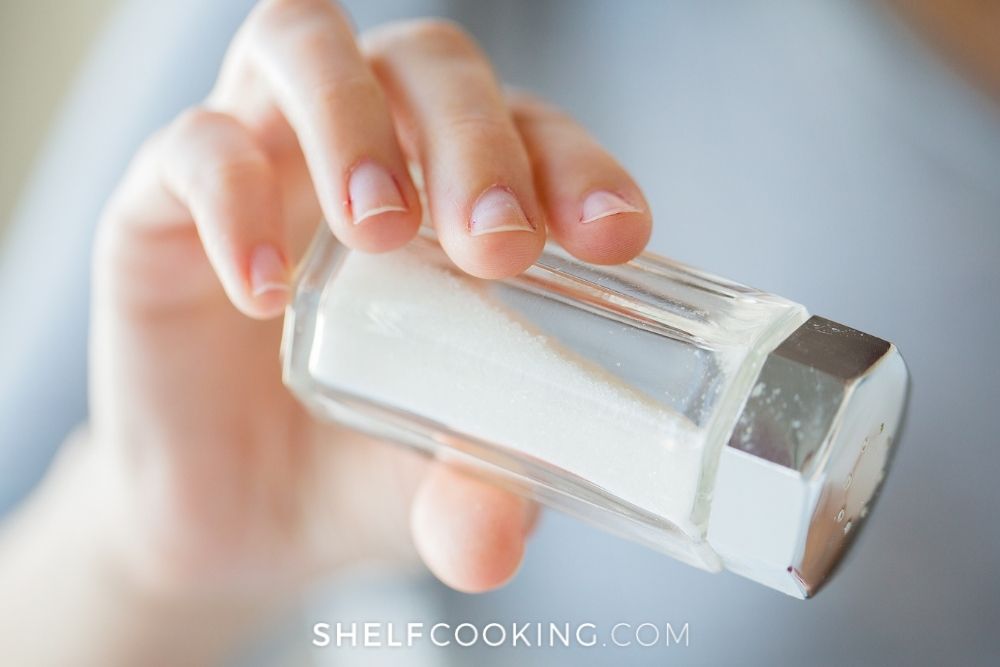
1. Rinse or Soak Foods: Rinsing or soaking salty ingredients like olives, capers, or canned beans can help remove excess salt. Be sure to drain them well before adding to your recipe.
2. Fresh or Frozen Over Canned: Whenever possible, choose fresh or frozen ingredients over canned ones. Fresh produce and frozen vegetables generally contain less sodium than their canned counterparts.
3. Enhance Flavor with Herbs and Spices: Embrace the world of herbs and spices to add depth and complexity to your dishes. Experiment with fresh or dried herbs like basil, thyme, rosemary, oregano, and cilantro, as well as spices such as cumin, paprika, turmeric, and garlic powder. These flavor boosters can take your meals to a whole new level without relying on excess salt.
4. Citrus Zest and Juice: The zing of citrus zest and juice can brighten up your dishes and add a burst of flavor without the need for extra salt. Try using lemon, lime, or orange zest, and squeeze some fresh juice into your recipes.
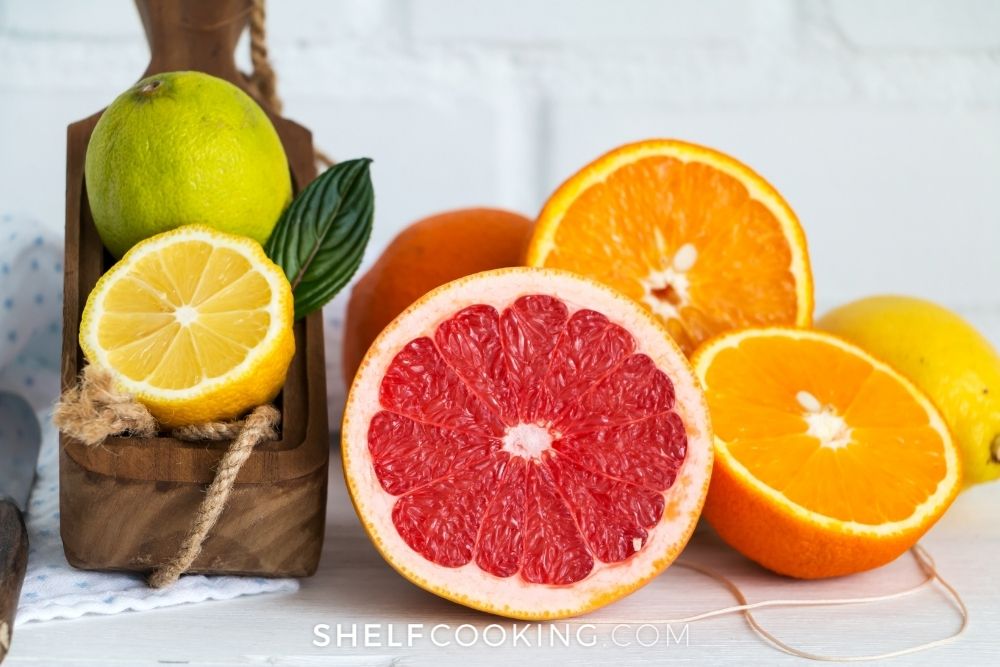
5. Vinegars and Acids: Incorporate vinegar (like balsamic, apple cider, or rice vinegar) and acidic ingredients (like tomatoes or pickled vegetables) to add tanginess and flavor to your dishes, reducing the need for salt.
6. Onion and Garlic: Sautéing onions and garlic can enhance the savory taste of your recipes without relying on excessive salt. They are a great way to build flavors from the base up.
7. Make Your Own Spice Blends: Create your own salt-free spice blends at home, customizing the flavors to suit your preferences. This way, you control the sodium content.
WAYS TO DECREASE SATURATED FAT CONTENT OF A RECIPE
There are a couple different types of fats, some of which have a healthier profile than others. Diets high in saturated fat have been associated with an increased risk of heart disease and other cardiovascular issues. Consuming too much saturated fat can lead to elevated levels of LDL cholesterol (“bad” cholesterol), which can contribute to the formation of plaque in the arteries, leading to atherosclerosis and potentially causing heart attacks and strokes.
Foods high in saturated fat include: fatty cuts of animal meat, high-fat dairy products, processed meats like salami and bacon, and palm oil. Here are some ways to swap out unhealthy fats with healthy fats!
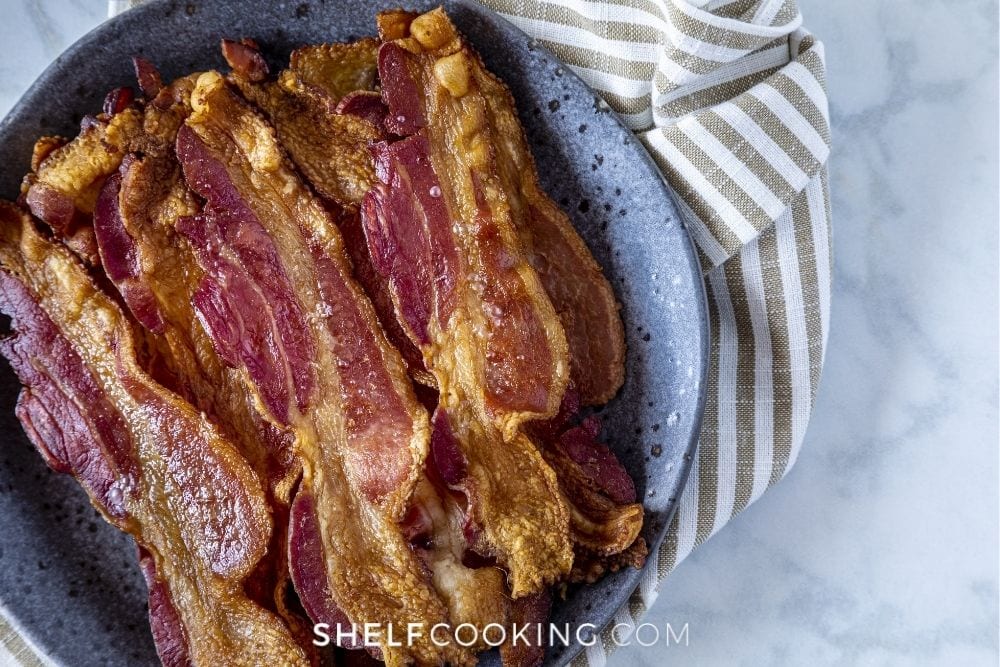
1. Replace Butter with Avocado or Applesauce: Swap out butter in recipes with mashed avocado or unsweetened applesauce. Both options add moisture and richness while cutting down on saturated fats.
2. Use Greek Yogurt instead of Sour Cream or Mayonnaise: Greek yogurt is a versatile ingredient that can replace sour cream or mayonnaise in recipes like dips, dressings, and even baked goods. It's lower in fat and higher in protein, making it a healthier alternative.
3. Trade in Heavy Cream for Coconut Milk: Coconut milk is a creamy and dairy-free alternative to heavy cream. It works well in both sweet and savory dishes and adds a subtle coconut flavor.
4. Use Leaner Proteins: Choose leaner cuts of meat, such as skinless chicken breast or turkey, and opt for fish like salmon or trout, which are rich in omega-3 fatty acids.

5. Incorporate Nut Flours and Nut Butters: In baking recipes, consider using almond flour, coconut flour, or other nut flours instead of traditional wheat flour. Nut butters can also add richness and flavor to sauces and dressings.
6. Choose Healthy Oils: Opt for healthier oils like olive oil, avocado oil, or coconut oil instead of saturated fats like butter or lard. These oils contain heart-healthy monounsaturated fats and have various health benefits.
WAYS TO DECREASE SUGAR CONTENT OF A RECIPE
Sugary foods are typically high in calories yet leave you feeling hungry again 30 minutes later! They do little to give you a feeling of fullness, but can do some damage on your teeth, your energy levels, your skin, your mood, and your risk of chronic illnesses. The unfortunate reality is that sugar is always sneaking into our foods and recipes! Here are some helpful tips to decrease your sugar consumption:
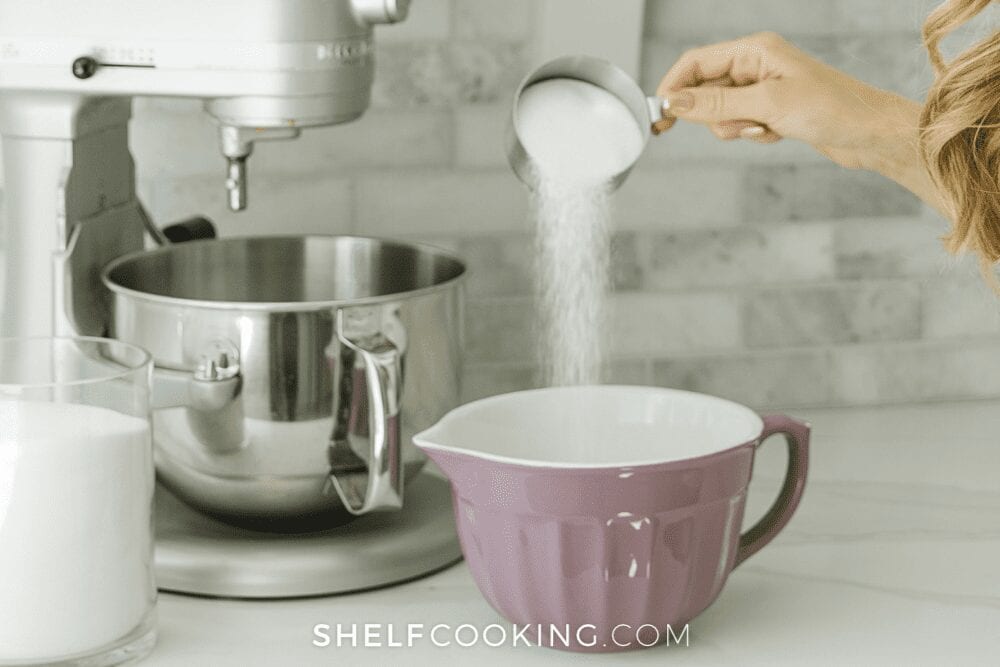
1. Unsweetened Applesauce: Use unsweetened applesauce to replace some or all of the sugar in baked goods like muffins, cakes, and brownies. It adds natural sweetness and moisture while reducing the need for added sugar.
2. Mashed Bananas: Mashed ripe bananas work as a great natural sweetener and can replace sugar in various recipes. They work well in muffins, pancakes, and quick breads.
3. Coconut Sugar: Coconut sugar has a lower glycemic index than regular sugar and adds a caramel-like flavor to dishes. It can be used as a one-to-one replacement for granulated sugar in many recipes.
4. Vanilla Extract: Enhance the sweetness of your recipes with a dash of pure vanilla extract. Its aromatic flavor can give the impression of sweetness without adding extra sugar.
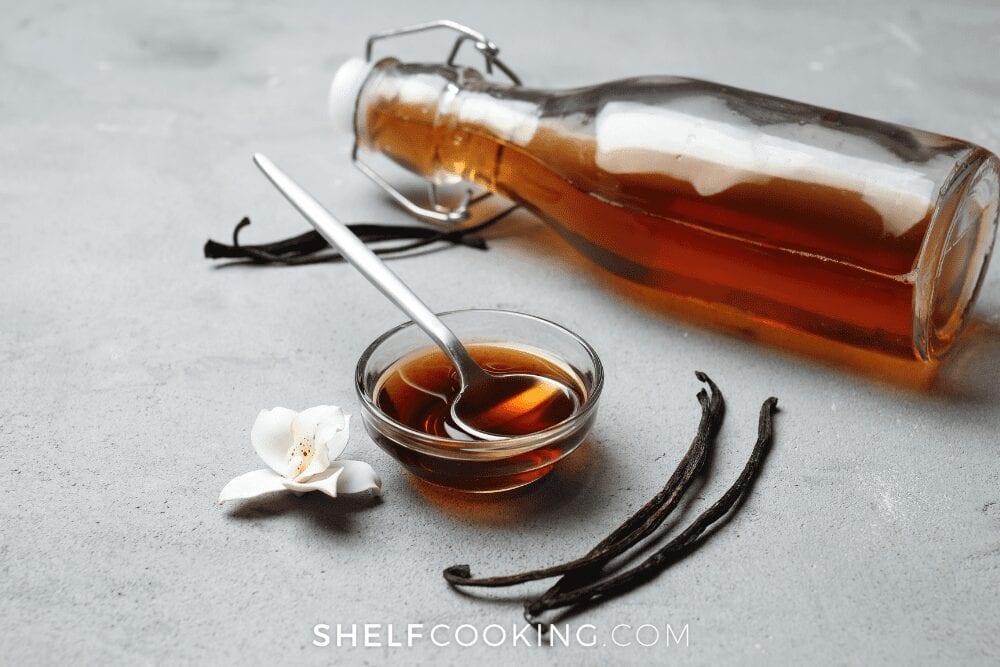
5. Use Fruits for Sweetness: Incorporate naturally sweet fruits like berries, apples, or pears to add sweetness to your dishes. They can be used in smoothies, oatmeal, and even savory dishes like salads.
6. Focus on Spices: Enhance the flavor of your recipes with spices like cinnamon, nutmeg, ginger, or cardamom. These spices add depth and warmth, making your dishes taste more satisfying without relying on added sugar.
7. Dark Chocolate: If your recipe calls for milk chocolate or sweetened chocolate chips, consider using dark chocolate with a higher cocoa content. Dark chocolate is less sweet and contains antioxidants, making it a healthier option.
8. Unsweetened Cocoa Powder: In recipes that call for cocoa powder, choose unsweetened cocoa powder instead of sweetened versions to control sugar intake.

Remember, modifying recipes to be healthier is all about experimenting and finding what works best for your taste preferences and dietary needs. With these ingredient swaps, you'll be well on your way to creating nutritious and delicious dishes that both your taste buds and body will love!

If you enjoyed this read, you'll LOVE these other great Shelf Cooking blog posts!
- Go From BBQ Beginner To Grill Master This Summer! Easy Tips and Tricks For Using Your Grill Like a Pro!
- The Best Summer Squash Recipes
- Easy Homemade Granola Recipe – Plus Tons of Recipe Add-Ins and Substitutions
